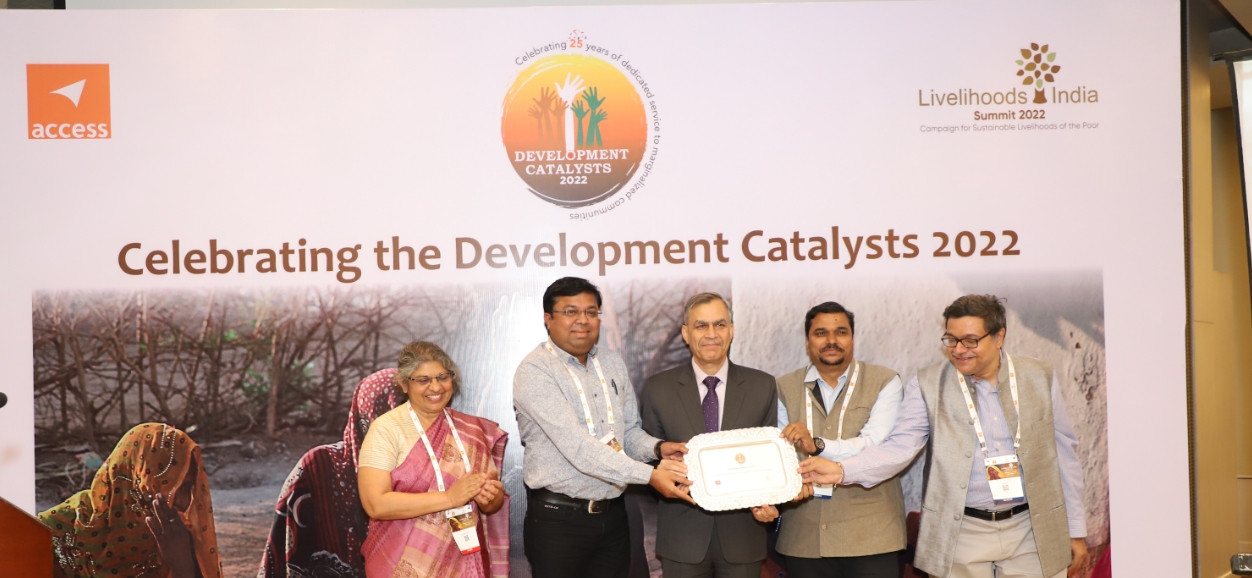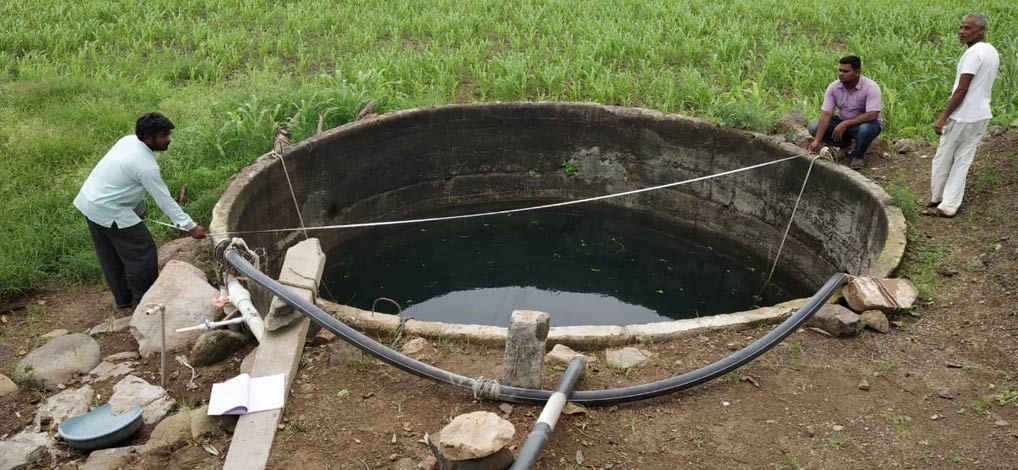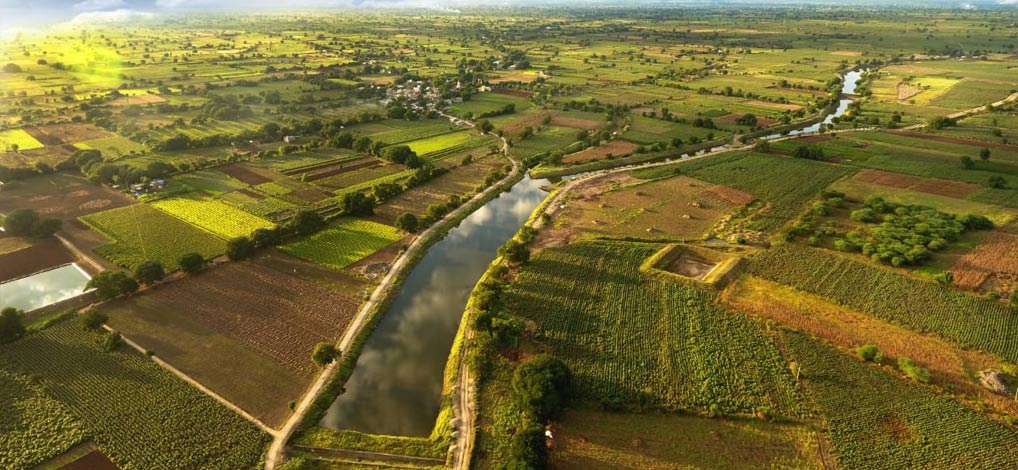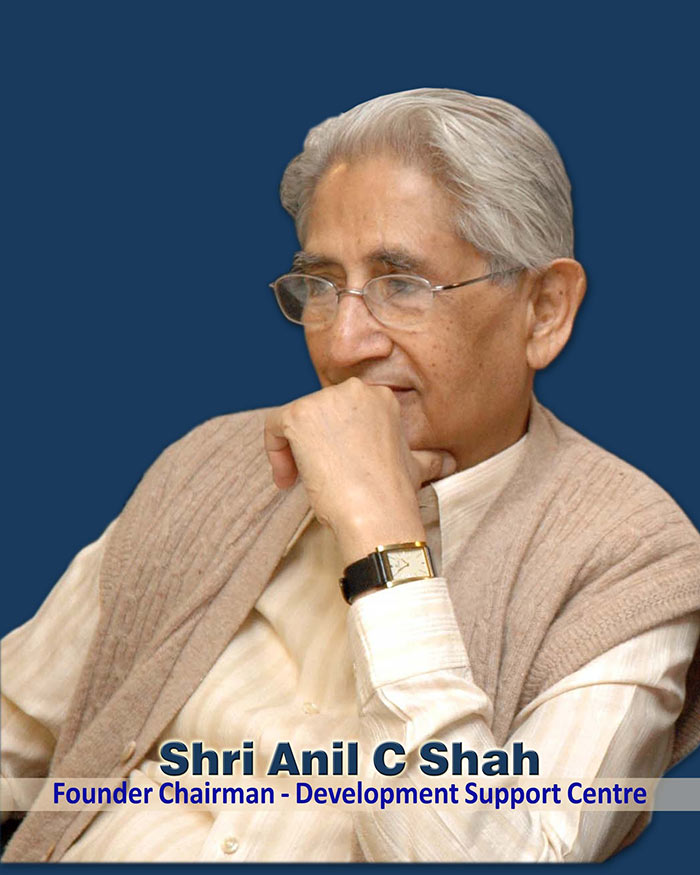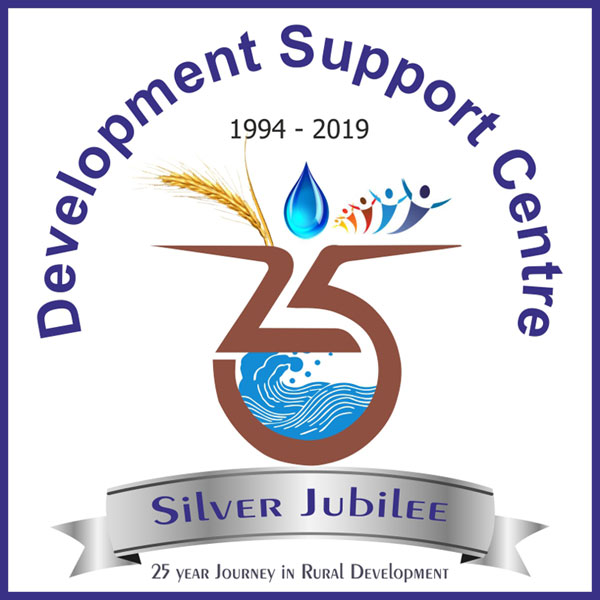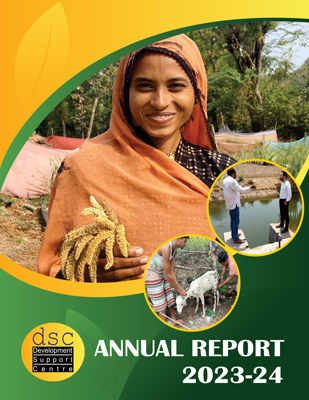- Impact of Participatory Irrigation Management on economic growth
(Download)
 Development Support Centre (DSC) has been working on participatory irrigation management since 1994-95. Over the years, it has directly promoted PIM in four major and three medium irrigation projects across Gujarat and MP. In 2007, DSC conducted a regional workshop on PIM during which, a three-state study (AP, MP and Gujarat) on the performance of WUAs was presented.
Besides limitations of the WUAs, the study also highlighted some successful WUAs in these states. It was therefore felt that an in-depth understanding was on the economic impact of such successful WUAs which would provide valuable learning for others also. Thus a four-state study was undertaken to look at the economic impact of PIM on farmerŌĆÖs livelihoods, taking case studies of WUAs across four States.
Development Support Centre (DSC) has been working on participatory irrigation management since 1994-95. Over the years, it has directly promoted PIM in four major and three medium irrigation projects across Gujarat and MP. In 2007, DSC conducted a regional workshop on PIM during which, a three-state study (AP, MP and Gujarat) on the performance of WUAs was presented.
Besides limitations of the WUAs, the study also highlighted some successful WUAs in these states. It was therefore felt that an in-depth understanding was on the economic impact of such successful WUAs which would provide valuable learning for others also. Thus a four-state study was undertaken to look at the economic impact of PIM on farmerŌĆÖs livelihoods, taking case studies of WUAs across four States.
- Mohani May Fail Again, Anil C. Shah, Pankaj Kumar, Pinakin Vyas 1999. 16p.
(Download)
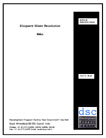 Mohani is an irrigation cooperative in the command area of Ukai projct of Surat district of Gujarat, India. Mohani is a legendary irrigation cooperative that functioned exceptionally well for 10 years from its inception in 1978. Mohani was role model for other irrigation cooperatives and was the acclaimed in the Sixth and Seventh Five Year Plan. However, after 10 years of success this society faced disruption. DSC was asked by a high level working committee to study the case of Mohani. This paper is an examination of the reasons for the initial success and subsequent problems of Mohani Water Users Association and lessons that could be learnt by others.
Mohani is an irrigation cooperative in the command area of Ukai projct of Surat district of Gujarat, India. Mohani is a legendary irrigation cooperative that functioned exceptionally well for 10 years from its inception in 1978. Mohani was role model for other irrigation cooperatives and was the acclaimed in the Sixth and Seventh Five Year Plan. However, after 10 years of success this society faced disruption. DSC was asked by a high level working committee to study the case of Mohani. This paper is an examination of the reasons for the initial success and subsequent problems of Mohani Water Users Association and lessons that could be learnt by others.
- The Deprived: In the Command Area of Irrigation System, Anil C. Shah, August 2000. 21p.
(Download)
 DSC through its experience of promoting PIM realised that tailend farmers in the canal irrigation system are deprived of their due share of water and at times they don't get any water. Therefore DSC found this deprivation existed at the end of various parts of the irrigation system.
DSC through its experience of promoting PIM realised that tailend farmers in the canal irrigation system are deprived of their due share of water and at times they don't get any water. Therefore DSC found this deprivation existed at the end of various parts of the irrigation system.
- Women, Water, Irrigation, Anil C. Shah, March 2001. 19p.
(Download)
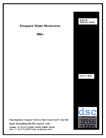 Involvement of women in the affairs of water Users Association is considered important for improving the canal management. This paper is an examination of two issues: 1. How canals can serve better women's priorities for domestic use of water and 2. What women can do to improve canal management and functioning of Water Users Associations?
Involvement of women in the affairs of water Users Association is considered important for improving the canal management. This paper is an examination of two issues: 1. How canals can serve better women's priorities for domestic use of water and 2. What women can do to improve canal management and functioning of Water Users Associations?
- Tail-enders and other deprived in canal irrigation system (Overall summary), Preface by Anil C. Shah, DSC, 2003. 178p.
 DSC conducted a state level study of Gujarat entitled " Deprived" to understand the plight of the tailend farmers in any canal irrigation system. "The Deprived" brought out the fact that in most of the cases tailenders are deprived of the benefits of the canal water as farmers in the head and middle reach capture more water than their share. Therefore to understand the situation of tailend farmers on a national level this study was scaled up and study was conducted in other five states. A summary of the study of the extent and the causes of deprivation of tail-enders and other deprived in Gujarat, Haryana, Karnataka, Maharashtra, Orissa and Tamil Nadu.
DSC conducted a state level study of Gujarat entitled " Deprived" to understand the plight of the tailend farmers in any canal irrigation system. "The Deprived" brought out the fact that in most of the cases tailenders are deprived of the benefits of the canal water as farmers in the head and middle reach capture more water than their share. Therefore to understand the situation of tailend farmers on a national level this study was scaled up and study was conducted in other five states. A summary of the study of the extent and the causes of deprivation of tail-enders and other deprived in Gujarat, Haryana, Karnataka, Maharashtra, Orissa and Tamil Nadu.
- Financial viability of irrigation co-operatives: an exploratory study in Gujarat, Vaibhav Chaturvedi, Preface by Anil C. Shah, June 2004. 54p.
(Download)
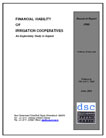 Irrigation cooperatives at minor level are important institutions that have a pivotal role in success of Participatory Irrigation Management. Therefore it was important to examine the financial viability of the canal water users association. Financial viability of the irrigation cooperatives implies that they are able to generate enough income to meet their regular and emergency expenses and at the same time invest adequately in the maintenance and repair of the canals. The objectives of the study were to identify and analyse the critical factors for financial viability, elicit the conscious steps taken by the supporting agency and farmers for ensuring the financial strength of these ICs and develop recommendations for fostering and enhancing financial viability of the ICs and ensuring proper and regular maintenance & repairs.
Irrigation cooperatives at minor level are important institutions that have a pivotal role in success of Participatory Irrigation Management. Therefore it was important to examine the financial viability of the canal water users association. Financial viability of the irrigation cooperatives implies that they are able to generate enough income to meet their regular and emergency expenses and at the same time invest adequately in the maintenance and repair of the canals. The objectives of the study were to identify and analyse the critical factors for financial viability, elicit the conscious steps taken by the supporting agency and farmers for ensuring the financial strength of these ICs and develop recommendations for fostering and enhancing financial viability of the ICs and ensuring proper and regular maintenance & repairs.
- Farmer Managed water distribution through Irrigation Cooperatives:the case study of Dharoi Irrigation Project,Gujarat
 The irrigation management activities that are transferred to the farmers after intervention of Participatory Irrigation Management in mid 90ŌĆÖs, include: Water distribution management- planning for the appropriate crop; water charge fixation; collection;,water distribution systemrepair and maintenance of the physical structures, and conflict resolutionamong users.
The farmers, through the Water User Associations (WUAs) registered as Irrigation Cooperatives in Gujarat, are involved in the planning of all functions transferred to them, including distribution of water. The efficiency and sustainability of an Irrigation Cooperative (IC) depends on its decision making as well as set of norms and rules developed on the basis of the collective wisdom of its members. Several ICs in the Dharoi irrigation system have performed very well on these counts, since the time they were rejuvenated in mid-nineties. Thus few successful cases of Dharoi are documented.
The irrigation management activities that are transferred to the farmers after intervention of Participatory Irrigation Management in mid 90ŌĆÖs, include: Water distribution management- planning for the appropriate crop; water charge fixation; collection;,water distribution systemrepair and maintenance of the physical structures, and conflict resolutionamong users.
The farmers, through the Water User Associations (WUAs) registered as Irrigation Cooperatives in Gujarat, are involved in the planning of all functions transferred to them, including distribution of water. The efficiency and sustainability of an Irrigation Cooperative (IC) depends on its decision making as well as set of norms and rules developed on the basis of the collective wisdom of its members. Several ICs in the Dharoi irrigation system have performed very well on these counts, since the time they were rejuvenated in mid-nineties. Thus few successful cases of Dharoi are documented.
- Water for Domestic use on Irrigation Cooperative
(Download)
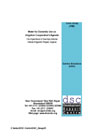 Although women are among of the main stakeholders in natural resources, they neither stake their claim on NR, nor participate in their management readily. For instance, women do not use canal water to meet their domestic needs; in their perception canal water is meant solely for agriculture. However, if they were allowed to use this resource, life would become easier for them. As they are unlikely to articulate their needs and interests on their own, womenŌĆÖs needs have to be brought out by someone else. In Participatory Irrigation Management (PIM) villages, women do not participate in canal irrigation management though they are directly or indirectly involved in agriculture activities. Thus, there is a need to encourage them to put forward their needs and stake their claim on canal water and participate in its management. With this intension Development Support Centre tried of involving them through construction of washing ghat on the bank of the canal. The case is about how women were involved throughout the process of construction; what are their achievements; what are their learnings etc.
Although women are among of the main stakeholders in natural resources, they neither stake their claim on NR, nor participate in their management readily. For instance, women do not use canal water to meet their domestic needs; in their perception canal water is meant solely for agriculture. However, if they were allowed to use this resource, life would become easier for them. As they are unlikely to articulate their needs and interests on their own, womenŌĆÖs needs have to be brought out by someone else. In Participatory Irrigation Management (PIM) villages, women do not participate in canal irrigation management though they are directly or indirectly involved in agriculture activities. Thus, there is a need to encourage them to put forward their needs and stake their claim on canal water and participate in its management. With this intension Development Support Centre tried of involving them through construction of washing ghat on the bank of the canal. The case is about how women were involved throughout the process of construction; what are their achievements; what are their learnings etc.
- Cost Benefit Analysis of Participatory Irrigation Management.
(Download)
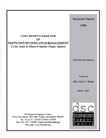 Many researchers have exhibited the benefits of the Participatory Irrigation Management (PIM) efforts, e.g. increase in area irrigated, less number of conflicts, better service delivery, improvement in maintenance of irrigation systems, etc. But most of the studies have not followed the ŌĆśCost Benefit AnalysisŌĆÖ approach that compares the quantified benefits in money terms with the investment incurred over a period of time. Comparison of benefits with costs, can give a reliable idea about the monitory benefit of the investments in the PIM programme. Thus this study is an effort to quantify benefits against the investment w.r.t the case of Dharoi irrigation project, visnagar, Gujarat.
Many researchers have exhibited the benefits of the Participatory Irrigation Management (PIM) efforts, e.g. increase in area irrigated, less number of conflicts, better service delivery, improvement in maintenance of irrigation systems, etc. But most of the studies have not followed the ŌĆśCost Benefit AnalysisŌĆÖ approach that compares the quantified benefits in money terms with the investment incurred over a period of time. Comparison of benefits with costs, can give a reliable idea about the monitory benefit of the investments in the PIM programme. Thus this study is an effort to quantify benefits against the investment w.r.t the case of Dharoi irrigation project, visnagar, Gujarat.
- Study on designed capacity of Dharoi dam vs actual command area irrigation
(Download)

- Best Practices on MNREGS Assisted Canal Rehabilitation under Participatory Irrigation Management in Dhar, Madhya Pradesh
(Download)
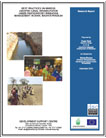
 Publications
Publications
 Research Studies / Research Papers
Research Studies / Research Papers  Development Support Centre (DSC) has been working on participatory irrigation management since 1994-95. Over the years, it has directly promoted PIM in four major and three medium irrigation projects across Gujarat and MP. In 2007, DSC conducted a regional workshop on PIM during which, a three-state study (AP, MP and Gujarat) on the performance of WUAs was presented.
Besides limitations of the WUAs, the study also highlighted some successful WUAs in these states. It was therefore felt that an in-depth understanding was on the economic impact of such successful WUAs which would provide valuable learning for others also. Thus a four-state study was undertaken to look at the economic impact of PIM on farmerŌĆÖs livelihoods, taking case studies of WUAs across four States.
Development Support Centre (DSC) has been working on participatory irrigation management since 1994-95. Over the years, it has directly promoted PIM in four major and three medium irrigation projects across Gujarat and MP. In 2007, DSC conducted a regional workshop on PIM during which, a three-state study (AP, MP and Gujarat) on the performance of WUAs was presented.
Besides limitations of the WUAs, the study also highlighted some successful WUAs in these states. It was therefore felt that an in-depth understanding was on the economic impact of such successful WUAs which would provide valuable learning for others also. Thus a four-state study was undertaken to look at the economic impact of PIM on farmerŌĆÖs livelihoods, taking case studies of WUAs across four States.  Mohani is an irrigation cooperative in the command area of Ukai projct of Surat district of Gujarat, India. Mohani is a legendary irrigation cooperative that functioned exceptionally well for 10 years from its inception in 1978. Mohani was role model for other irrigation cooperatives and was the acclaimed in the Sixth and Seventh Five Year Plan. However, after 10 years of success this society faced disruption. DSC was asked by a high level working committee to study the case of Mohani. This paper is an examination of the reasons for the initial success and subsequent problems of Mohani Water Users Association and lessons that could be learnt by others.
Mohani is an irrigation cooperative in the command area of Ukai projct of Surat district of Gujarat, India. Mohani is a legendary irrigation cooperative that functioned exceptionally well for 10 years from its inception in 1978. Mohani was role model for other irrigation cooperatives and was the acclaimed in the Sixth and Seventh Five Year Plan. However, after 10 years of success this society faced disruption. DSC was asked by a high level working committee to study the case of Mohani. This paper is an examination of the reasons for the initial success and subsequent problems of Mohani Water Users Association and lessons that could be learnt by others.  DSC through its experience of promoting PIM realised that tailend farmers in the canal irrigation system are deprived of their due share of water and at times they don't get any water. Therefore DSC found this deprivation existed at the end of various parts of the irrigation system.
DSC through its experience of promoting PIM realised that tailend farmers in the canal irrigation system are deprived of their due share of water and at times they don't get any water. Therefore DSC found this deprivation existed at the end of various parts of the irrigation system.  Involvement of women in the affairs of water Users Association is considered important for improving the canal management. This paper is an examination of two issues: 1. How canals can serve better women's priorities for domestic use of water and 2. What women can do to improve canal management and functioning of Water Users Associations?
Involvement of women in the affairs of water Users Association is considered important for improving the canal management. This paper is an examination of two issues: 1. How canals can serve better women's priorities for domestic use of water and 2. What women can do to improve canal management and functioning of Water Users Associations?  DSC conducted a state level study of Gujarat entitled " Deprived" to understand the plight of the tailend farmers in any canal irrigation system. "The Deprived" brought out the fact that in most of the cases tailenders are deprived of the benefits of the canal water as farmers in the head and middle reach capture more water than their share. Therefore to understand the situation of tailend farmers on a national level this study was scaled up and study was conducted in other five states. A summary of the study of the extent and the causes of deprivation of tail-enders and other deprived in Gujarat, Haryana, Karnataka, Maharashtra, Orissa and Tamil Nadu.
DSC conducted a state level study of Gujarat entitled " Deprived" to understand the plight of the tailend farmers in any canal irrigation system. "The Deprived" brought out the fact that in most of the cases tailenders are deprived of the benefits of the canal water as farmers in the head and middle reach capture more water than their share. Therefore to understand the situation of tailend farmers on a national level this study was scaled up and study was conducted in other five states. A summary of the study of the extent and the causes of deprivation of tail-enders and other deprived in Gujarat, Haryana, Karnataka, Maharashtra, Orissa and Tamil Nadu.  Irrigation cooperatives at minor level are important institutions that have a pivotal role in success of Participatory Irrigation Management. Therefore it was important to examine the financial viability of the canal water users association. Financial viability of the irrigation cooperatives implies that they are able to generate enough income to meet their regular and emergency expenses and at the same time invest adequately in the maintenance and repair of the canals. The objectives of the study were to identify and analyse the critical factors for financial viability, elicit the conscious steps taken by the supporting agency and farmers for ensuring the financial strength of these ICs and develop recommendations for fostering and enhancing financial viability of the ICs and ensuring proper and regular maintenance & repairs.
Irrigation cooperatives at minor level are important institutions that have a pivotal role in success of Participatory Irrigation Management. Therefore it was important to examine the financial viability of the canal water users association. Financial viability of the irrigation cooperatives implies that they are able to generate enough income to meet their regular and emergency expenses and at the same time invest adequately in the maintenance and repair of the canals. The objectives of the study were to identify and analyse the critical factors for financial viability, elicit the conscious steps taken by the supporting agency and farmers for ensuring the financial strength of these ICs and develop recommendations for fostering and enhancing financial viability of the ICs and ensuring proper and regular maintenance & repairs.  The irrigation management activities that are transferred to the farmers after intervention of Participatory Irrigation Management in mid 90ŌĆÖs, include: Water distribution management- planning for the appropriate crop; water charge fixation; collection;,water distribution systemrepair and maintenance of the physical structures, and conflict resolutionamong users.
The farmers, through the Water User Associations (WUAs) registered as Irrigation Cooperatives in Gujarat, are involved in the planning of all functions transferred to them, including distribution of water. The efficiency and sustainability of an Irrigation Cooperative (IC) depends on its decision making as well as set of norms and rules developed on the basis of the collective wisdom of its members. Several ICs in the Dharoi irrigation system have performed very well on these counts, since the time they were rejuvenated in mid-nineties. Thus few successful cases of Dharoi are documented.
The irrigation management activities that are transferred to the farmers after intervention of Participatory Irrigation Management in mid 90ŌĆÖs, include: Water distribution management- planning for the appropriate crop; water charge fixation; collection;,water distribution systemrepair and maintenance of the physical structures, and conflict resolutionamong users.
The farmers, through the Water User Associations (WUAs) registered as Irrigation Cooperatives in Gujarat, are involved in the planning of all functions transferred to them, including distribution of water. The efficiency and sustainability of an Irrigation Cooperative (IC) depends on its decision making as well as set of norms and rules developed on the basis of the collective wisdom of its members. Several ICs in the Dharoi irrigation system have performed very well on these counts, since the time they were rejuvenated in mid-nineties. Thus few successful cases of Dharoi are documented.
 Although women are among of the main stakeholders in natural resources, they neither stake their claim on NR, nor participate in their management readily. For instance, women do not use canal water to meet their domestic needs; in their perception canal water is meant solely for agriculture. However, if they were allowed to use this resource, life would become easier for them. As they are unlikely to articulate their needs and interests on their own, womenŌĆÖs needs have to be brought out by someone else. In Participatory Irrigation Management (PIM) villages, women do not participate in canal irrigation management though they are directly or indirectly involved in agriculture activities. Thus, there is a need to encourage them to put forward their needs and stake their claim on canal water and participate in its management. With this intension Development Support Centre tried of involving them through construction of washing ghat on the bank of the canal. The case is about how women were involved throughout the process of construction; what are their achievements; what are their learnings etc.
Although women are among of the main stakeholders in natural resources, they neither stake their claim on NR, nor participate in their management readily. For instance, women do not use canal water to meet their domestic needs; in their perception canal water is meant solely for agriculture. However, if they were allowed to use this resource, life would become easier for them. As they are unlikely to articulate their needs and interests on their own, womenŌĆÖs needs have to be brought out by someone else. In Participatory Irrigation Management (PIM) villages, women do not participate in canal irrigation management though they are directly or indirectly involved in agriculture activities. Thus, there is a need to encourage them to put forward their needs and stake their claim on canal water and participate in its management. With this intension Development Support Centre tried of involving them through construction of washing ghat on the bank of the canal. The case is about how women were involved throughout the process of construction; what are their achievements; what are their learnings etc.  Many researchers have exhibited the benefits of the Participatory Irrigation Management (PIM) efforts, e.g. increase in area irrigated, less number of conflicts, better service delivery, improvement in maintenance of irrigation systems, etc. But most of the studies have not followed the ŌĆśCost Benefit AnalysisŌĆÖ approach that compares the quantified benefits in money terms with the investment incurred over a period of time. Comparison of benefits with costs, can give a reliable idea about the monitory benefit of the investments in the PIM programme. Thus this study is an effort to quantify benefits against the investment w.r.t the case of Dharoi irrigation project, visnagar, Gujarat.
Many researchers have exhibited the benefits of the Participatory Irrigation Management (PIM) efforts, e.g. increase in area irrigated, less number of conflicts, better service delivery, improvement in maintenance of irrigation systems, etc. But most of the studies have not followed the ŌĆśCost Benefit AnalysisŌĆÖ approach that compares the quantified benefits in money terms with the investment incurred over a period of time. Comparison of benefits with costs, can give a reliable idea about the monitory benefit of the investments in the PIM programme. Thus this study is an effort to quantify benefits against the investment w.r.t the case of Dharoi irrigation project, visnagar, Gujarat. 









